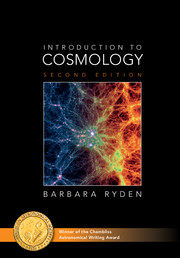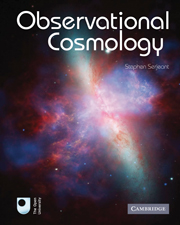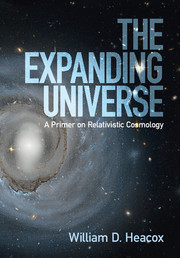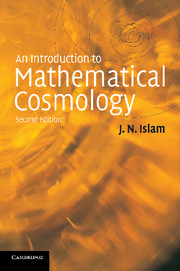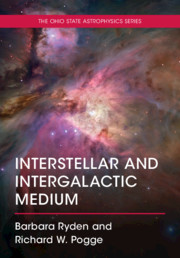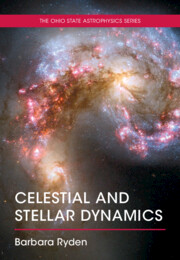Introduction to Cosmology
This second edition of Introduction to Cosmology is an exciting update of an award-winning textbook. It is aimed primarily at advanced undergraduate students in physics and astronomy, but is also useful as a supplementary text at higher levels. It explains modern cosmological concepts, such as dark energy, in the context of the Big Bang theory. Its clear, lucid writing style, with a wealth of useful everyday analogies, makes it exceptionally engaging. Emphasis is placed on the links between theoretical concepts of cosmology and the observable properties of the universe, building deeper physical insights in the reader. The second edition includes recent observational results, fuller descriptions of special and general relativity, expanded discussions of dark energy, and a new chapter on baryonic matter that makes up stars and galaxies. It is an ideal textbook for the era of precision cosmology in the accelerating universe.
- Written in an engaging style, using clear explanations and analogies to help students connect cosmology to everyday life
- Fits well to introductory cosmology courses, without requiring advanced mathematics or any prior study of astronomy
- Includes creative end-of-chapter problems that have been class-tested on students, with an instructor's manual featuring solutions available via www.cambridge.org/cosmology
Reviews & endorsements
'This is an excellent textbook, with a clear and pedagogical presentation, which perfectly fills a gap between other introductory books available at either much more basic or much more advanced levels. The easy-to-read style, focus on physics concepts, and self-contained derivations make the book easy to follow. It works well for advanced undergraduates or beginning graduate students, who will come away with a solid and comprehensive understanding of modern cosmology. The additions in this Second Edition, such as galaxy formation and baryon acoustic oscillations, are valuable and bring the book even more up-to-date.' Zoltán Haiman, Columbia University
'Barbara Ryden writes in a very clear and engaging style. This transparency has inspired many undergraduate science majors in my cosmology class to pursue additional coursework and research in astrophysics. The addition of new material on the baryonic component of the universe links cosmology to many modern research topics in astrophysics.' Crystal Martin, University of California, Santa Barbara
'I am delighted that a second edition of Barbara Ryden's Introduction to Cosmology is now available. With the addition of a second chapter on structure formation, the book paints an elegant mathematical picture of the evolution of the Universe from the Big Bang to the formation of stars. Ryden does a masterful job of paring cosmology down to its most fundamental elements and presenting complex topics with exceptional clarity. The conversational style of the text, the imaginative analogies, and the emphasis placed on developing students' conceptual understanding combine to make this book one of the best upper-level astronomy texts available.' Christy Tremonti, University of Wisconsin, Madison
'Barbara Ryden's Introduction to Cosmology is now published in a second edition, following the well-received first edition of 2002 … This is a course book for physics students; its approach is quantitative and the basic equations and mathematical descriptions are extensively outlined from first principles in all the areas covered. Those equations that are not derived are quoted in such a way as to be understood … Without this, of course, cosmology cannot be usefully studied … The style of writing is efficient, while being pleasant and clear, and the explanations are on the whole of a high quality in their attention to the level of detail that is needed for a genuine understanding of the arguments. This is a highly recommendable textbook that deserves to be widely taken up in university courses in physics and astronomy.' Peter J. Bussey, Contemporary Physics
'… Ryden avoids oversimplification while covering all topics at about the same level, appropriate for an undergraduate course in cosmology, although the last two chapters on structural formation go somewhat beyond that. … The mixture of narrative and equations is very close to a lecture course, and the book is well written. Complicated topics such as cosmological distances and horizons are presented briefly, but correctly. The editing is much better than average … There are a few black-and-white figures throughout the text. Each chapter ends with a handful of exercises, solutions to which are available to those using the book for a course. … The main text is followed by a table of useful constants and a five-page small-print index. … this book is highly recommended …' Phillip Helbig, The Observatory
Product details
November 2016Hardback
9781107154834
276 pages
253 × 180 × 17 mm
0.69kg
75 b/w illus. 5 tables
Available
Table of Contents
- Preface to second edition
- Preface to first edition
- 1. Introduction
- 2. Fundamental observations
- 3. Newton versus Einstein
- 4. Cosmic dynamics
- 5. Model universes
- 6. Measuring cosmological parameters
- 7. Dark matter
- 8. The cosmic microwave background
- 9. Nucleosynthesis and the early Universe
- 10. Inflation and the very early Universe
- 11. Structure formation: gravitational instability
- 12. Structure formation: baryons and photons
- Epilogue
- Bibliography
- Table of useful constants
- Index.

